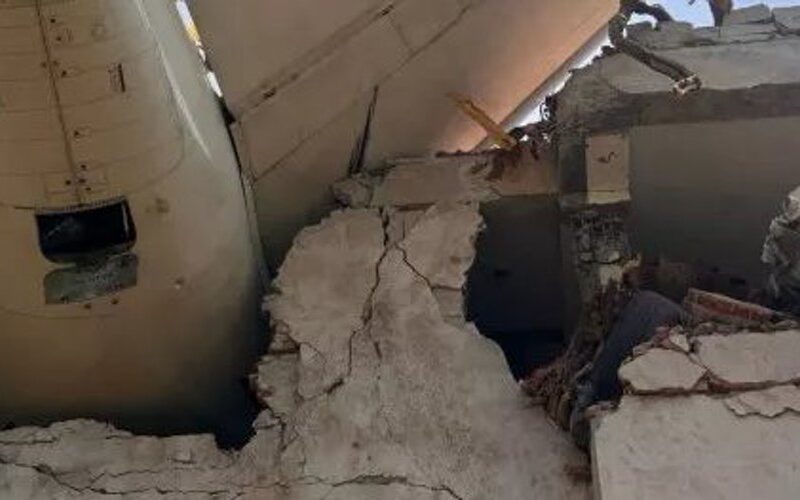Air India 787 Crash: The Deadliest in Years
On June 12, Air India Flight AI 171, a Boeing 787-8 Dreamliner bound from Ahmedabad to London, crashed just 29 seconds after takeoff, tragically killing 241 people on board and 19 on the ground. Only one passenger survived.
A preliminary report by India’s AAIB revealed both engine fuel switches were manually moved to “CUTOFF” a few seconds after lift-off, cutting engine power. Despite attempts to restart engines, the plane failed to recover altitude and crashed into a medical hostel.
Cockpit voice recordings captured a tense exchange:
“Why did you cut off?”
“I didn’t.”
No mechanical faults were found; aviation experts suggest human error may be involved. As of now, airlines are mandated to inspect fuel-control systems and evaluate whether cockpit video recording should be enforced in future investigations.
India: Recent Emergencies & Growing Safety Concerns
Just days after the crash, an IndiGo A320neo flight from Delhi to Goa diverted to Mumbai after experiencing engine shutdown mid-air. The aircraft landed safely on one engine, showcasing the redundancy of twin-engine aircraft systems.
In Hyderabad, a cargo aircraft made an emergency landing due to a landing gear malfunction, while other SpiceJet and Oman Air flights had to divert due to technical issues or medical emergencies.
A parliamentary panel has flagged chronic staff shortages in India’s aviation regulatory bodies—more than 53% of positions vacant in DGCA, with similar gaps at BCAS and AAI—raising questions about oversight capacity.
Global Aviation Incidents in 2025
Mid-air collision over Potomac River, Washington, D.C.: American Eagle CRJ700 airliner collided with a Black Hawk helicopter, killing all 67 people on both aircraft.
South Sudan crash: A Beechcraft 1900 charter carrying oil workers crashed shortly after takeoff in Unity State, killing 20 of 21 onboard.
Helicopter crash in New York: A Bell 206 sightseeing helicopter broke apart mid-flight and plunged into the Hudson River, killing all six onboard.
Toronto landing accident: Delta Connection Flight 4819 overturned on landing at Pearson Airport. All 80 onboard survived, 21 sustained injuries.
Additional incidents include cabin fires, tailstrikes, and turbulence-related injuries, including:
Air Busan A321 fire in South Korea
Royal Thai Police Twin Otter crash offshore
🚨 Preliminary Report Released on #AI171 Crash
— Live updates on Air India AI171 crash. #FlightAI17 (@AI171Crash) July 12, 2025
Investigators have released initial findings on the crash of Air India Flight AI171. Key timeline from the cockpit recorder:
08:08:39 – Aircraft takes off
08:08:42 – Fuel cutoff switches moved from Run to Cutoff within 1 second… pic.twitter.com/Soubld5RrN
Key Concerns & Safety Implications
Human error vs. mechanical failure: Focus on fuel switch handling in Air India crash has sparked debate about pilot actions.
Calls are mounting for cockpit video recorders, arguing they could provide crucial clarity in investigations.
Regulatory oversight gaps: Staffing shortages in India’s aviation bodies undermine safety enforcement.
Mental health scrutiny: Investigators are examining whether captain Sumeet Sabharwal was under stress or depression.
| Incident | Location/Airline | Outcome |
| Air India Flight AI 171 crash | Ahmedabad, India | 260 dead (incl ground) |
| Engine shutdown mid-flight | IndiGo (Delhi-Goa flight) | Safe diversion at Mumbai |
| Mid-air collision | Potomac River, US | 67 fatalities (aircraft & chopper) |
| Beechcraft crash | South Sudan | 20 dead, 1 survivor |
| Helicopter breakup | Hudson River, US | 6 dead (tourist flight) |
| Delta Connection hard landing | Toronto, Canada | All 80 survived, 21 injured |
Looking Ahead
Aviation experts emphasize the need for rigorous mental health screenings, regular maintenance audits, and transparent crisis communication.
For India, the Air India crash remains a powerful catalyst for reform in pilot protocols, aircraft certification, and regulatory accountability.
Globally, the spate of accidents underscores the necessity of tighter air space coordination, updated emergency response strategies, and integration of technology for predictive safety systems.







